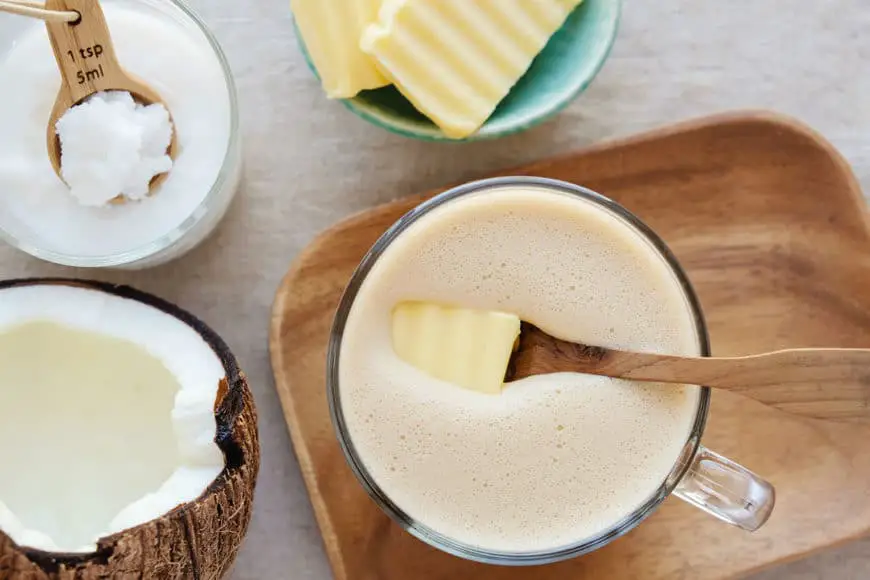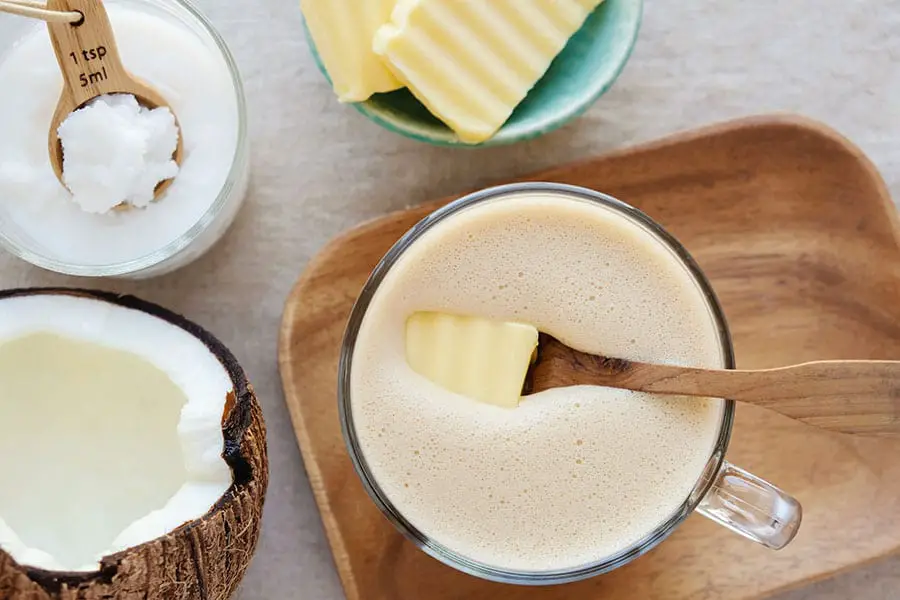
Keto coffee, often called bulletproof coffee, is a creamy, energizing drink tailored for the ketogenic diet—a low-carb, high-fat lifestyle that pushes your body to burn fat for fuel. By blending coffee with grass-fed butter and medium-chain triglyceride (MCT) oil, it delivers a dose of healthy fats to keep you full and focused.
Whether you’re deep into keto or just curious about a new way to start your day, keto coffee is worth a try. This guide covers what keto coffee is, how it supports ketosis, its benefits, and how to make it at home with tips to get it right.
What Is Keto Coffee?
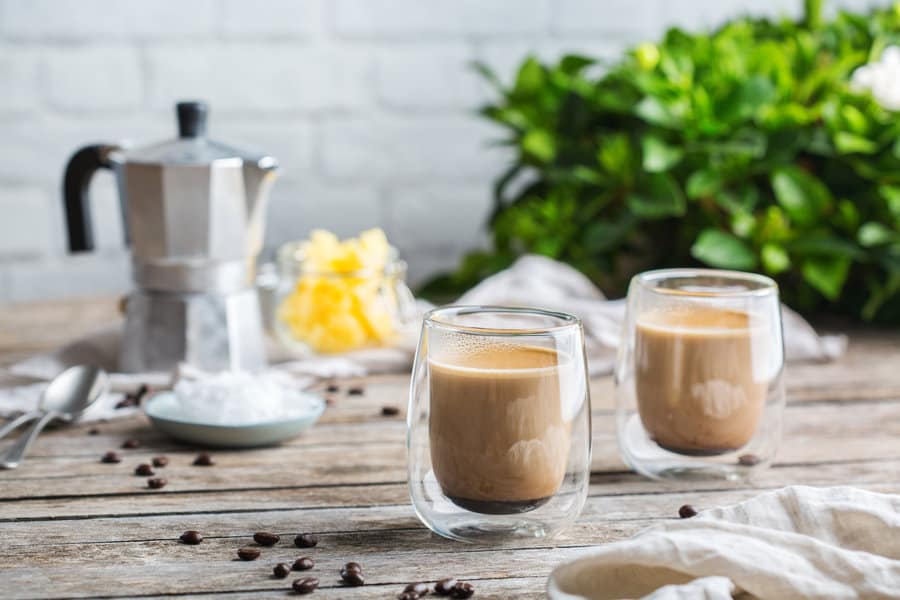
Keto coffee swaps sugary creamers for high-quality fats like grass-fed butter and MCT oil, a coconut oil derivative. The result is a frothy, rich drink that fuels your body with calories from fat—about 80% of its 400–500 calories per cup.
Unlike regular coffee, which might spike blood sugar with milk or sugar, keto coffee keeps carbs near zero, aligning with the keto diet’s goal of maintaining ketosis. It’s not just for dieters; anyone seeking a filling, low-carb breakfast can enjoy its creamy texture and sustained energy. The key is quality—non-toxic coffee beans and premium fats make all the difference.
Understanding Ketosis
Ketosis is a metabolic state where your body burns fat instead of carbs for energy, producing ketones as fuel. The keto diet triggers this by slashing carbs to 20–50 grams daily, emphasizing fats (70–80% of calories) and moderate protein (15–20%). Unlike a general low-carb diet, keto’s strict carb limit and focus on ketosis set it apart.
Historically used to treat epilepsy in the 1920s, keto gained fame as a weight-loss method in the 2010s. By breaking down stored and dietary fats, your body generates ketones, shifting from glucose reliance to fat-burning, which can lead to weight loss and mental clarity.
How Keto Coffee Supports Ketosis
Keto coffee is a keto diet ally because its high-fat ingredients—MCT oil and butter—jumpstart ketone production. MCTs, unlike other fats, bypass the liver and convert directly into ketones, providing instant energy for your brain and body. Butter adds slow-burning saturated fats, keeping you satiated for hours.
This combo helps maintain ketosis by supplying dietary fats without carbs, reducing hunger and cravings. My espresso post stressed quality beans, and that applies here: fresh, non-toxic coffee ensures a clean taste and avoids pesticide residues. Keto coffee isn’t a magic bullet—it works best within a strict keto diet, not as a standalone drink.
Does Keto Coffee Help You Lose Weight?
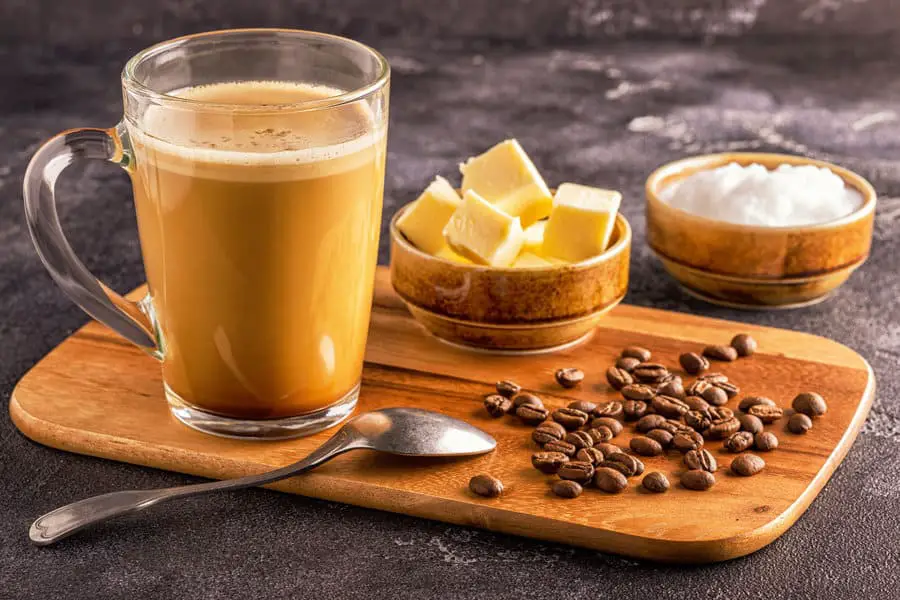
Keto coffee can aid weight loss when paired with a keto diet, but it’s not a shortcut. Its 400–500 calories from fats fill you up, curbing cravings for sugary snacks or carb-heavy meals. By boosting ketone levels, it enhances fat-burning, potentially speeding up weight loss.
Many report losing 10–20 pounds over months on keto, with keto coffee as a daily staple. However, adding it to a non-keto diet without cutting carbs can backfire, increasing calorie intake and fat storage.
My Moka Pot post warned against over-relying on coffee additives, and the same applies here: balance is key. Consult a doctor or dietitian before starting, especially if you have health concerns.
Health Benefits of Keto Coffee
Keto coffee offers perks beyond ketosis, thanks to its unique ingredients:
- Sustained Energy: MCT oil provides quick ketones, while butter’s fats burn slowly, avoiding caffeine crashes.
- Mental Focus: Ketones fuel the brain, enhancing clarity and concentration, as you noted in your coffee benefits post (April 2025).
- Reduced Hunger: High fats suppress appetite, helping you skip unhealthy snacks.
- Nutrient Boost: Grass-fed butter contains vitamins A, D, and K2, though in small amounts. Unlike sugary creamers, keto coffee avoids blood sugar spikes. Moderation is crucial—one cup daily, ideally replacing a meal, maximizes benefits. Overdoing it risks digestive issues or weight gain, as excess fat can overwhelm your system.
How to Make Keto Coffee at Home
Making keto coffee is quick and customizable. This basic recipe yields one 8–10 oz serving, perfect as a breakfast replacement. Your AeroPress post (May 2025) emphasized precise measurements, and that’s key here for consistency.
Basic Recipe
Ingredients:
- 1 cup (8 oz) brewed coffee (fresh, medium roast)
- 1 tbsp grass-fed unsalted butter
- 1 tbsp MCT oil (start with 1 tsp if new to MCT)
- Optional: 1–2 tsp keto-friendly sweetener (e.g., stevia, erythritol)
Instructions:
- Brew coffee using your preferred method (e.g., pour-over, AeroPress, French press).
- Pour half the coffee (4 oz) into a blender with butter, MCT oil, and optional sweetener.
- Blend on low for 10–15 seconds, venting the lid to release steam. Add remaining coffee and blend until frothy (5–10 seconds).
- Pour into a mug and enjoy warm.
Nutritional Breakdown (per cup):
| Nutrient | Amount | Notes |
|---|---|---|
| Calories | 440 | 80% from fat |
| Fat | 51g | Mostly saturated |
| Carbs | 0g | Keto-friendly |
| Protein | 1g | Minimal |
| Vitamins | A, B2, B5 | 22–28% RDA |
Tips:
- Use a blender for a smooth, frothy texture. A milk frother or immersion blender works in a wide mug, as you suggested for Turkish coffee (May 2025).
- Start with less MCT oil to avoid stomach upset, gradually increasing to 1 tbsp.
- Avoid over-blending to prevent overheating, which can curdle the butter.
Customizing Your Keto Coffee
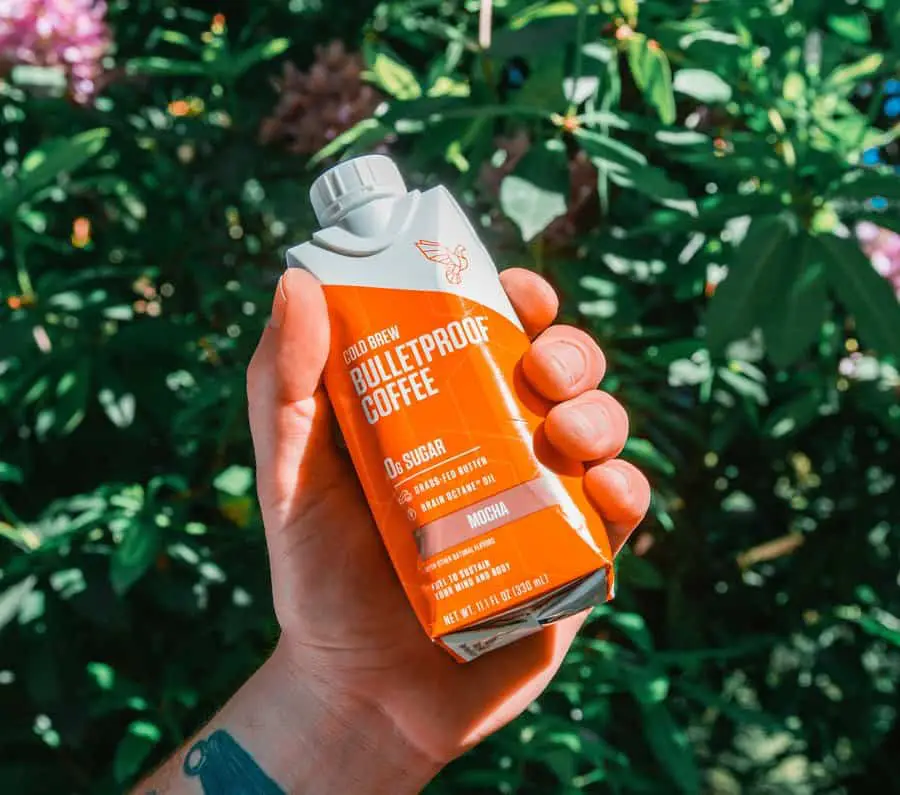
You can jazz up keto coffee with add-ins that keep it keto-friendly. Your cinnamon coffee post (April 2025) highlighted flavor pairings, and similar creativity works here:
- Coconut Milk: Full-fat canned coconut milk adds creaminess and extra fats without dairy, ideal for lactose intolerance.
- Spices: Ceylon cinnamon or vanilla extract enhances flavor without carbs. A pinch of cardamom or nutmeg adds warmth.
- Nut Butters: A teaspoon of almond or cacao butter boosts richness and healthy fats.
- Collagen Peptides: Add a scoop for protein and joint health.
- Sweeteners: Stevia or monk fruit keep it carb-free, unlike honey. Avoid high-carb add-ins like regular milk or sugar. For a decadent twist, top with whipped coconut cream or sprinkle unsweetened cocoa. These tweaks let you tailor the drink while staying in ketosis.
Troubleshooting Common Issues
- Oily Texture: Too much MCT oil or poor blending can leave a greasy film. Start with 1 tsp MCT and blend thoroughly.
- Upset Stomach: MCT oil can cause cramps if new to your diet. Begin with 1 tsp and increase gradually over weeks.
- Weak Flavor: Low-quality coffee or stale beans dull the taste. Use fresh, medium-roast beans.
- Curdled Butter: Blending too long or using hot coffee can separate fats. Blend briefly and use coffee at 180–190°F.
Final Thoughts
Keto coffee is a powerhouse for keto dieters, blending rich coffee with healthy fats to fuel ketosis, curb hunger, and sharpen focus. Its grass-fed butter and MCT oil deliver quick energy and satisfaction, but quality matters—choose fresh, non-toxic beans and premium fats. Whether you whip it up at home or grab a powdered mix, one cup daily can replace a meal and keep you on track.
Outside a keto diet, it’s less effective, so pair it with low-carb eating for best results. Experiment with add-ins, enjoy the frothy goodness, and make keto coffee your morning ritual.

